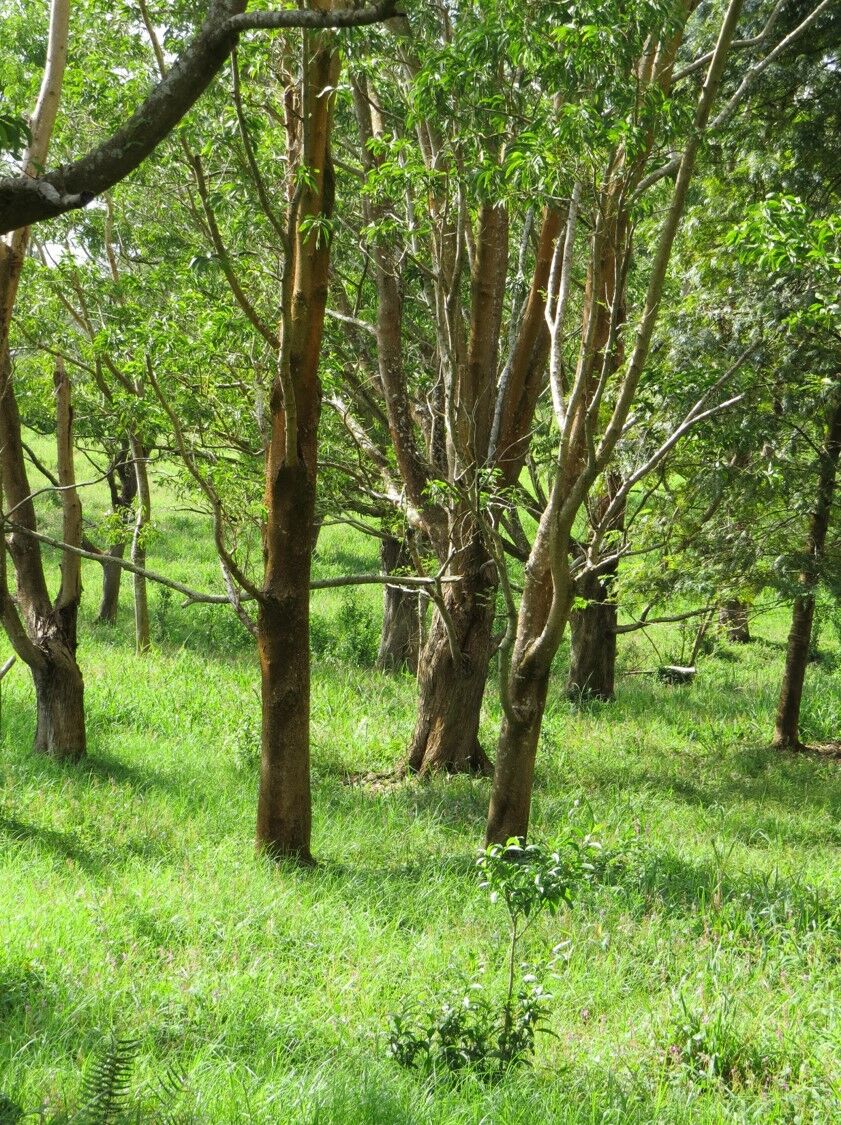
Introduction
Popular for its sweet scent rather than for its hideous form, Cestrum nocturnum, commonly called night blooming jasmine, is the most commonly sold horticultural invasive species. This sprawling shrub has pointed alternately arranged leaves, green bark, tubular white flowers, and pea-sized fruit with a styrofoam-like texture.
A member of the nightshade family (Solanaceae), night blooming jasmine is originally from the West Indies. The Latin species name, nocturnum, refers to ‘night’, a fitting botanical name since that’s when the fragrance is emitted. Interestingly, night blooming jasmine is not related to true jasmine (Jasminum spp.).
History
Introduced to Hawaiʻi around 1871, night blooming jasmine quickly became a common ornamental. It escaped cultivation and invaded natural areas a mere seventeen years later in 1888. Like Miconia and strawberry guava, and other invasives that were brought to Hawaiʻi for their attractive qualities, night blooming jasmine has spread into natural areas. Today night blooming jasmine is invasive on Hawaiʻi Island, Kauaʻi, Oahu, Maui, and Lanai.
What makes it an invasive weed?
Night blooming jasmine tolerates shade and grows well in moist places, making our native rainforests an appealing habitat. It also grows well on trails, roadsides, ravines, and secondary forests. The prolific seeds are eaten by birds and spread deep into the native ecosystem, where they remain viable in the soil for many years. This plant is self-compatible, needing only itself to produce viable seeds. The bush grows vegetatively as well, rooting from the nodes to make new individuals who reach reproductive maturity in a very short time. Night blooming jasmine can rapidly colonize an area forming dense, impenetrable thickets, shading out other plants causing fundamental changes in the natural ecosystem spelling trouble for native species. Native plants evolved over thousands of years to grow in harmony with one another, and they don’t grow well with aggressive competition. Night blooming jasmine is considered one of Hawaii’s most invasive horticultural plants. It is a no grow species for the Big Island Invasive Species Committee.

How is it harmful?
Originating from our gardens and moved around by birds, night blooming jasmine is not as harmless as one would think. This seemingly insignificant shrub is actively outcompeting old-growth koa and other native species around the state. Possibly from one plant, a large area in the understory of an old-growth koa forest is packed tightly with night blooming jasmine. The koa are outcompeted before they even have a chance. Seeds dropped by adult koa are completely shaded out and left no room to grow due to the aggressive nature of night-blooming jasmine.
There is no natural regeneration. The overstory of koa are all one age; when they die there will be no koa progeny to soar up into the sky, provide habitat for native fauna, recharge our groundwater and provide new seeds to continue gap phase dynamics. In the fight for light and nutrients, the bush beats the native old-growth tree.
Besides outcompeting with native and more desirable species, night blooming jasmine is toxic to fish, cattle and causes hay fever-like symptoms in humans. The strong odor emitted at night has caused nausea, hay fever, and migraine headaches to people downwind. An alluring odor to some can become a lawsuit or a call to the poison control hotline to another.
Plant pono, the solution
Planting Pono is the first line of defense against horticultural invasive species. Sadly, no laws exist about the sales and importation of invasive species like night blooming jasmine. Champaca, alahe’e, any citrus tree, pua kenikeni, crepe jasmine, and fragrant olive are all noninvasive choices that smell delicious and have a much better-looking form. Mahalo for choosing an alternative plant to invasive night-blooming jasmine. Mahalo for encouraging your friends, family, and neighbors to do the same.
Molly Murphy is the Plant Pono specialist for the Big Island Invasive Species Committee. She can be contacted at mollym3@hawaii.edu or (808)933-3340

Night blooming jasmine quickly forms impenetrable thickets that shade out koa progeny.



